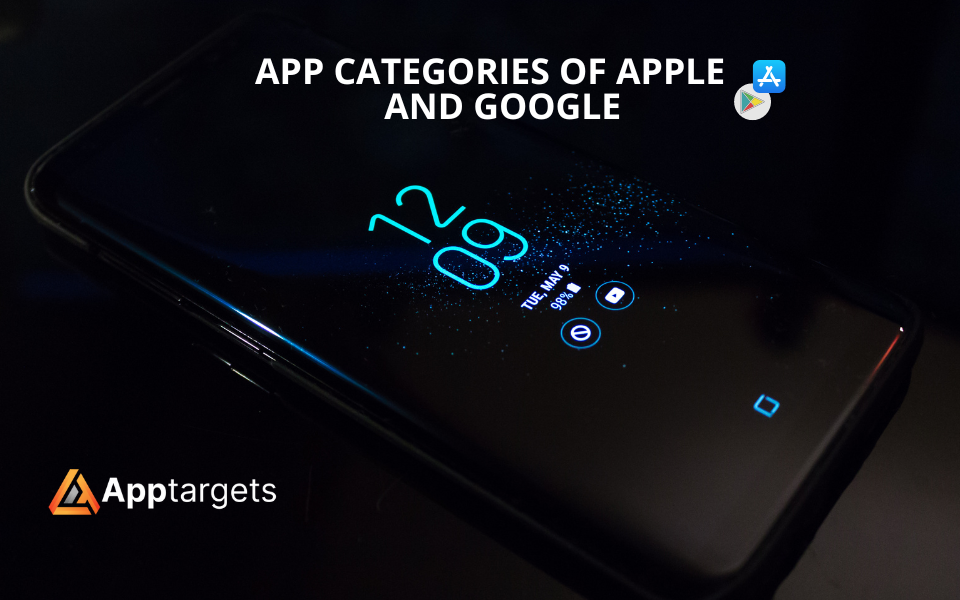App Categories of Apple and Google
When it comes to mobile app distribution, Apple's App Store and Google's Google Play are the two most popular platforms. They offer convenience for iOS and Android users to search and download apps/games on their devices. These platforms cover a variety of app categories. App categories are a separate set of groupings created by stores to categorize and group your app with similar apps. This system makes it easy for users to discover new apps.
In this article, we will explore the categories on the App Store and Google Play, their differences, and the importance of choosing the correct type for your app.
Apps in Apple's App Store can be assigned into two categories: primary and secondary. Primary types are more critical for discoverability because this is the category in your app that will appear to users in search results.
In Google Play, apps are assigned based on their application type as a single category. Google also lets app developers give their app tags to describe the features and functionality of their apps. Tags can also affect your app's ranking and visibility on Google Play.
Your app's category can have a significant impact on how well your app or game is promoted and ranked in the App Store and Google Play stores.
There are over 2.5 million apps available at Apple's App Store, including games, and it covers the following categories:
App Store (Apps):
- Apple Watch Apps
- Books
- Business
- Developer Tools
- Education
- Entertainment
- Finance
- Food & Drink
- Games
- Graphics & Design
- Health & Fitness
- Kids
- Lifestyle
- Magazines & Newspapers
- Medical
- Music
- Navigation
- News
- Photo & Video
- Productivity
- Reference
- Safari Extensions
- Shopping
- Social Networking
- Sports
- Travel
- Utilities
- Weather
App Store (Games):
- Action
- Adventure
- Apple Arcade
- AR Games
- Board
- Card
- Casino
- Casual
- Family
- Kids
- Music
- Puzzle
- Racing
- Role-playing
- Simulation
- Sports
- Strategy
- Trivia
- Word
Google Play offers over 3.6 million apps, including games, and covers the following categories:
Google Play (Apps):
- Art & Design
- Auto & Vehicles
- Beauty
- Books & Reference
- Business
- Comics
- Communications
- Dating
- Education
- Entertainment
- Events
- Finance
- Food & Drink
- Health & Fitness
- House & Home
- Libraries & Demo
- Lifestyle
- Maps & Navigation
- Medical
- Music & Audio
- News & Magazines
- Parenting
- Personalization
- Photography
- Productivity
- Shopping
- Social
- Sports
- Tools
- Travel & Local
- Video Players & Editors
- Weather
Google Play Store (Games):
- Action
- Adventure
- Arcade
- Board
- Card
- Casino
- Casual
- Educational
- Music
- Puzzle
- Racing
- Role-Playing
- Simulation
- Sports
- Strategy
- Trivia
- Word
As you can see, the App Store and Google Play have some categories with the same name. However, there are also some differences between the types offered by the App Store and Google Play. Here are some of the types unique to each platform:
The unique categories at the App Store that you won't find at other stores are Apple Watch Apps, Developer Tools, and Apple Arcade sections.
On the other hand, the unique categories of Google Play are Auto & Design, Beauty, Comics, Communications, Dating, Events, House & Home, Libraries & Demos, Parenting, and Personalization.
Another critical difference between the two platforms is their approach to categorization. While the Apple Store has predefined categories that app developers must select when submitting their apps, Google Play lets developers create their own classes. This strategy offers more flexibility for developers, but it may also result in a more diverse range of types.
It's essential to choose the right app category when submitting your unique app because it impacts ASO in terms of relevancy and competition, and it helps developers and marketing experts target the right audience. The selected category should be relevant to your app, and it should also enable your app to rank well in the charts. People regularly browse the charts to find new apps to download. This means popular, high-ranked apps receive more traffic and generate more organic downloads. The key to choosing the correct category for your app is finding a balance between relevance and competition. If you choose the right type for your app, you will see more impressions, conversions, and downloads of your app.
